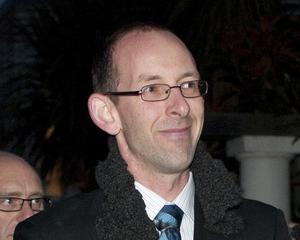Former detective sergeant Milton Weir told the court his feeling was the shootings of five members of the Bain family "had the appearance of a murder-suicide".
In evidence under cross-examination on the 16th day of 37-year-old David Cullen Bain's retrial for the murders of his parents and three siblings, Mr Weir agreed it was "fair to say" his feeling about bloody sock prints found on parts of the carpet in the Every St house was they had probably been made by the person responsible for the killings.
Bain denies murdering his father Robin, mother Margaret, sisters Arawa and Laniet and younger brother Stephen on June 20, 1994 when all were fatally shot.
He is represented by Michael Reed QC, Helen Cull QC, Paul Morten and Matthew Karam in the hearing before Justice Graham Panckhurst and the jury.
Crown counsel in the case are Kieran Raftery, Cameron Mander and Robin Bates.
Mr Weir, who left the police force nine years ago, began his evidence last Friday, spent most of yesterday under cross-examination and will face further questioning from the defence today.
He was challenged repeatedly by Mr Reed about aspects of the investigation and actions he took or failed to take then and during Bain's first trial in 1995.
In earlier evidence, Mr Weir said he was involved with ESR scientist Peter Hentschel in the luminol testing and measuring of bloody sock prints on parts of the carpet in the house.
To Mr Reed yesterday, he agreed he believed the person who made those prints must have been involved in the killings.
Asked why the sections of carpet containing the footprints were not cut and kept as an exhibit, he said that had been his first involvement in a luminol examination.
He believed that, as a scientist, Mr Hentschel would have told him if he considered a piece of the carpet should be cut.
Mr Weir agreed the sock prints were important and it was important to determine whose they were.
And he accepted the evidence should have been kept until after the appeal period.
But Mr Reed said the evidence had been destroyed by the police within 14 days of the crime, the carpet having been burned with the house.
Mr Weir said he had not been aware the house was about to be burned down - "I can't speak for others", but he agreed the destruction of the carpet meant the defence could not get its own experts to carry out tests or measure the prints.
He accepted the inference to the first jury was the bloody sock prints were David Bain's and he agreed it would have been sensible for police to have obtained measurements of the accused's foot as well as that of Robin Bain which had been measured in the mortuary.
Mr Weir was also asked why no firearms residue testing was carried out on Robin Bain's hands or on the accused's, the suggestion being that had it been done then the accused might have been excluded as the killer.
He told Mr Reed that testing of Robin Bain had been carried out the next day, but he had not believed it was appropriate to have such testing done on the accused at the scene.
Asked about the delay in allowing pathologist Alex Dempster access to the various crime scenes to take core body temperatures, Mr Weir said he felt it had been important to get plastic sheeting in place on the floor as, in his opinion, there had already been too many people inside the house.
He had been looking at a long-term scene examination as opposed to the short term and the pathologist would have had to disturb the bodies to take core temperatures.
He agree it was important to assess if the first four had died earlier than Robin Bain and that, other than senior ambulance officer Craig Wombwell checking each of the bodies for a pulse, there was no scientific indication of the time of death.
Mr Reed was critical of Mr Weir for failing to have fingernail scrapings and samples of blood on Robin Bain's hands taken for testing.
That was more evidence which was destroyed with the burial of Mr Bain, he said.
But Mr Weir said, as officer in charge of the scene, he had not been in charge of the various bodies and the individual officers who were responsible for the bodies would have been under the direction of another officer.
And he said it would surprise him if no samples of blood had been taken from Robin Bain or were destroyed "as soon as the funerals".





